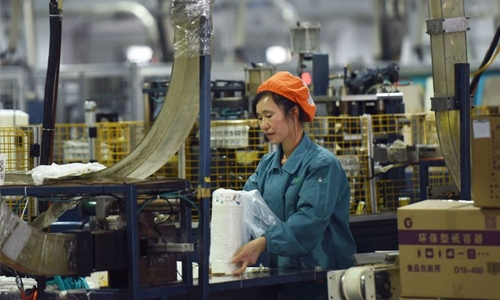China’s economy grew at slowest pace in 28 years
China’s economy grew at its slowest pace in almost three decades in 2018, losing more steam in the last quarter as it battles a massive debt pile and a US trade war, official data showed yesterday. The 6.6 per cent growth comes in above the official target of around 6.5pc and matches a forecast by analysts polled by AFP, but is down from the 6.8pc chalked up in 2017, according to the National Bureau of Statistics (NBS). And in a sign of the struggle Beijing faces, growth in the last three months of the year clocked in at 6.4pc, matching a low seen during the global financial crisis 10 years ago, with economists widely expecting the slowdown to deepen.
The slowing growth prompted Premier Li Keqiang last week to vow the government would not let the economy “fall off a cliff”. Relations with top trading partner the US deteriorated sharply last year after President Donald Trump hit roughly half of Chinese imports with new tariffs in an attempt to force trade concessions. Escalating the trade war is on hold for now after President Xi Jinping and Trump agreed to a three-month ceasefire, with top negotiators set to meet in Washington at the end of this month as a March deadline for a deal looms large.
“China-US economic and trade frictions do indeed affect the economy, but the impact is generally controllable,” said Ning. China hit the brakes on major projects such as subway lines and motorways to keep a lid on debt last year, with infrastructure investment rising by just 3.8 percent, down from 19 percent the year before. China’s exports to US and the world also fell in December, reinforcing the need for its legions of domestic consumers to fuel the economy.
Fourth quarter GDP growth slowed as expected, said Lu Ting, China economist at Nomura, in a note. “But the worst is yet to come,” he said. Retail sales growth slowed to 9.0 percent, down from a 10.2pc increase the previous year. In December, sales grew 8.2pc. Output at factories and workshops ticked up 6.2pc for the year, down from 6.6pc in 2017.
Related Posts

